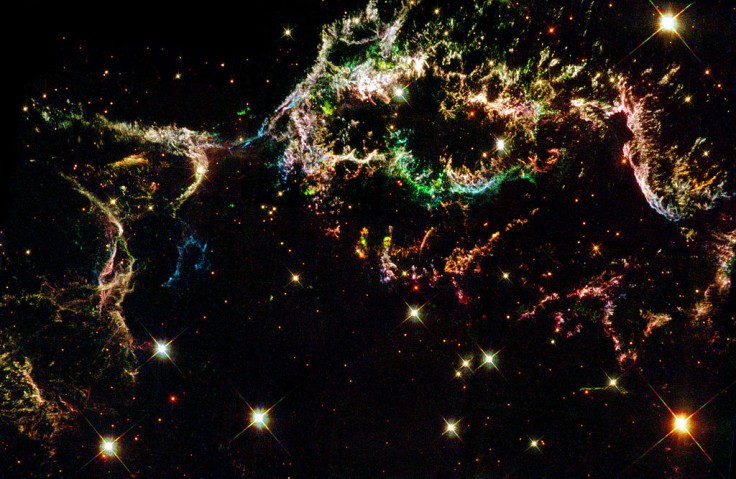
Do stars make sounds? NASA initiated a sonification project that translates images from the Hubble Space Telescope to audible sounds. The project recently translated a cluster of young stars, a supernova remnant, and a giant black hole in a quiet but striking melody.
According to NASA, Space is mostly quiet. Data collected by space telescopes are converted to charts, plots, graphs, and images. However, through sonification, the cosmic data could also be studied by hearing.
The data sonification project is led by the Chandra X-ray Center (CXC) in partnership with NASA's Universe of Learning program. Visualization scientist Dr. Kimberly Arcand, astrophysicist Dr. Matt Russo, and musician Andrew Santaguida assigned unique sounds and frequencies to the stars, creating a musical representation of the celestial bodies.
NASA Hubble Images: Star Cluster Westerlund 2
Westerlund 2 is a cluster of young stars located approximately 20,000 light years away from Earth. The 2 million year old stars are seen forming within the thick clouds. The star brightness vary based on dust clumps revolving around these stars.
🎧 What do young stars sound like?
— NASA (@NASA) September 16, 2021
Space is mostly quiet, but a sonification project translates data from @NASAHubble and our @ChandraXray telescope into audible sounds. Sit back, relax, and listen to the universe: https://t.co/ZgzoC8f2qS pic.twitter.com/A3bCjljPg8
Sonification reading: The sound data is rendered from left to right. Blighter stars produce louder sounds. Sound pitch is determined by its vertical position, with top-image stars having a higher pitch and low-image stars having a lower pitch. The Hubble data is played by strings, with plucked sounds for individual stars and bowed for diffuse clouds. Chandra's X-ray data is represented by bells.
Read also: NASA Spacewalk Video Today: Cosmonauts Spacewalk for 7+ Hours, Capture Stunning Video of Earth!
NASA Hubble Images: Supernova Remnant Tycho
Another exciting image chosen was the Tycho supernova remnant. The space activity starts within and explodes in an outward direction. The images show a lot of colors associated with different elements. Red for iron, green for silicon, blue for sulfur. Elements mixing create the abstract color combinations in between.
Sonification reading: Similar to the explosion, the sound data is first rendered from the center. Sounds were assigned by color, with red for low notes and blue or violet for high notes. Color mixed between will have sounds ranging from red and blue notes. The image brightness determined its sound frequency. The stars outside the immediate explosion are played by a harp.
NASA Hubble Images: Messier 87 Black Hole
The giant black hole Messier 87 has been studied for many years, especially with its massive jets of energetic particles around the area. The black hole interacts with red clouds of hot gas, which is especially dense in the center.
Sonification reading: The black hole translated in a sweeping clockwise direction, with the 3 o'clock position as its starting point. Bright light near the center has louder sounds, and light farther from the center has a higher pitch. The whole image is represented by short plucked sounds.
Sonification is an exciting new way to understand space activity. The sounds are also relaxing to listen to. NASA might have more exciting sonification projects in the future.









